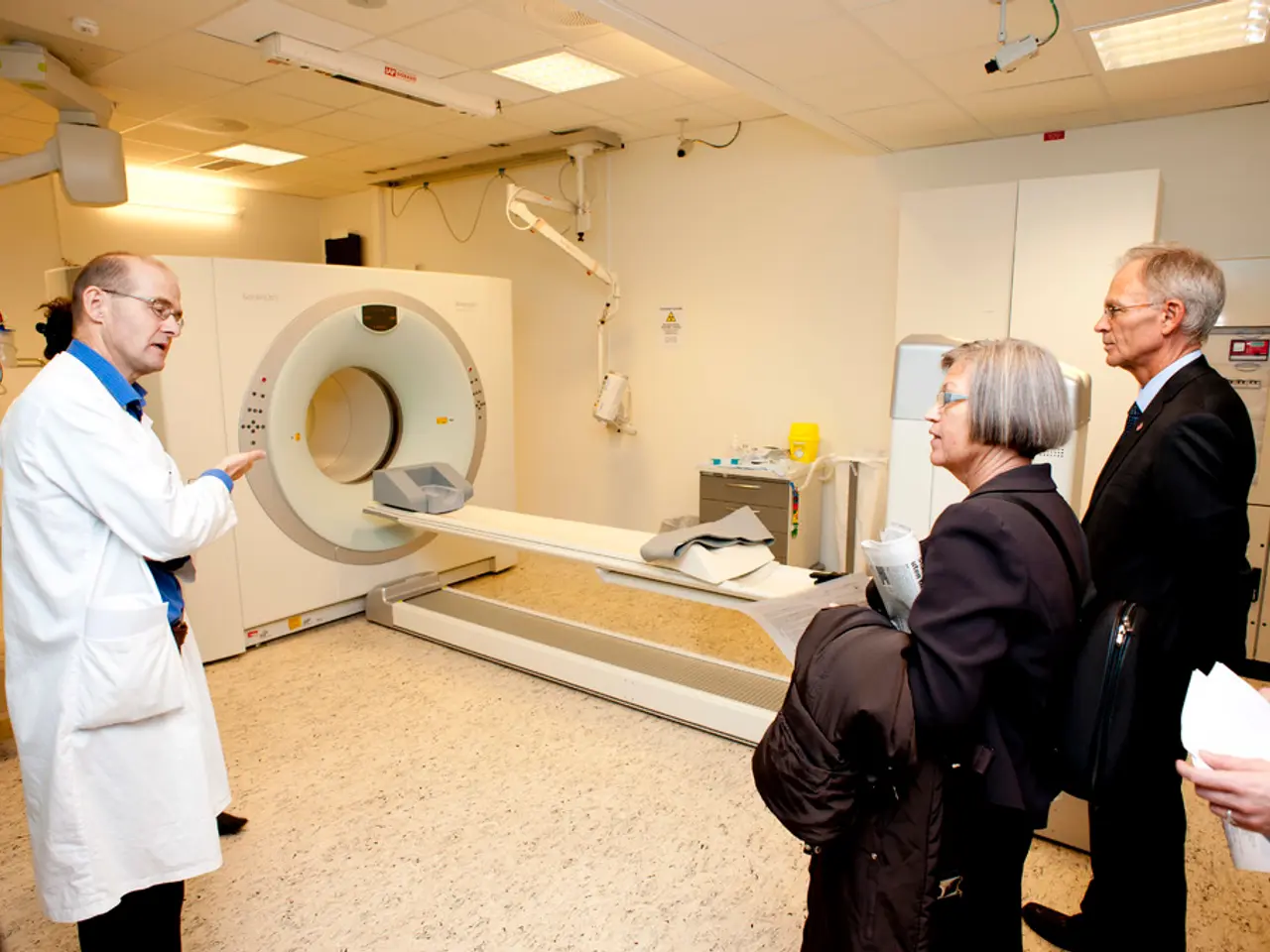AI's analysis of microscope slides: Unveiling hidden details
In the rapidly evolving world of medicine, the field of computational pathology (CPath) is making significant strides, thanks to the integration of machine learning (ML). This article delves into the use of ML in CPath, a discipline that involves analyzing and interpreting whole slide images of tissue.
One of the key challenges in developing CPath models is the nature of pathology data. Whole slide images (WSIs) are extremely large, often thousands of times larger than standard images, requiring novel architectures to handle long-range context and high resolution effectively. Moreover, labels are often available only at the slide level, necessitating the use of multiple instance learning (MIL) paradigms.
Variations in tissue preparation, scanner types, and institutional protocols also cause distribution shifts, challenging model generalizability. Furthermore, there is a concern about models unintentionally learning to encode patient-sensitive attributes, leading to privacy risks and performance disparities across demographic and institutional subgroups.
Researchers are addressing these challenges through several means. One of the primary strategies is the creation of large-scale, diverse datasets. For instance, Prov-GigaPath, a CPath model developed by Microsoft Research and Providence Genomics, was trained on 1.3 billion image patches from over 171,000 WSIs and 30,000+ patients.
Another approach is the use of self-supervised and weakly supervised learning. By leveraging self-supervised pretraining on unlabeled data and weak supervision approaches like MIL, models can utilize vast unlabeled datasets for representation learning and then adapt quickly to downstream tasks with minimal labels.
New metrics like the Foundation Model - Silhouette Index (FM-SI) are being developed to quantitatively assess model robustness against distribution shifts, aiding in identifying and improving model consistency in real-world clinical scenarios.
Ethical risk mitigation strategies are also being implemented. Frameworks like QERA are developed to systematically detect and mitigate ethical risks, including privacy leakage and disparities, by understanding how training strategies contribute to these issues and proposing actionable solutions validated empirically.
Innovative architectures and computational advances are also playing a crucial role. Models such as Prov-GigaPath leverage architectures like GigaPath and LongNet to handle giga-pixel scale images and long-range dependencies efficiently, overcoming hardware limitations and enabling real-world use.
In conclusion, the combination of large-scale, diverse datasets, advanced weakly supervised learning methods, robust benchmarking, and ethical risk mitigation strategies is driving progress in overcoming the key computational, clinical, and ethical challenges in developing pathology foundation models. As we continue to navigate the world of CPath, opportunities for growth remain, including the need for larger and more diverse datasets, ways to further optimize model training, tasks which have previously received less focus, and the difficulties of integrating models into clinical work.
This article was originally posted on rachel.our website and discusses the use of machine learning in computational pathology. Other CPath models, like Prov-GigaPath, treat tiles as tokens and encode both the tiles and the slide as model inputs. Researchers at Kaiko.ai plan to build a larger training set and are partnering with cancer centers across Europe to create a dataset for their model.
In another development, deep learning is being used to tackle the task of assessing the results of endomyocardial biopsies (EMB) in heart transplant patients. It is still early in the world of CPath, and many growth opportunities remain.
- Machine learning (ML) integration in computational pathology (CPath) is revolutionizing the analysis of whole slide images (WSIs) of tissue, aiding in diagnosing medical-conditions.
- The development of CPath models faces challenges, such as managing large, high-resolution WSIs, variable tissue preparation, and privacy concerns.
- To address these issues, researchers create diverse datasets, use self-supervised and weakly supervised learning, and develop ethical risk mitigation strategies.
- One example of a large-scale CPath model is Prov-GigaPath, trained on 1.3 billion image patches from over 171,000 WSIs and 30,000+ patients.
- Another strategy involves leveraging self-supervised pretraining on unlabeled data and weak supervision methods like multiple instance learning (MIL) for representation learning.
- New metrics like the Foundation Model - Silhouette Index (FM-SI) are being developed to evaluate model robustness against distribution shifts, improving consistency in clinical scenarios.
- Ethical risk mitigation frameworks, like QERA, are created to identify and address privacy leakage and disparities, promoting fairness in CPath models and other AI applications in health-and-wellness, education-and-self-development, and technology.




